
Children running to take cover as the heavy dust and the wind pierce through the Nawabad Farabi-ha IDP camp. © UNHCR/Edris Lutfi
Afghanistan is currently experiencing one of the biggest displacement crises in modern history—and is on course to witness the highest number of documented civilian casualties in a single year since the UN’s records began.
Iran and Pakistan host nearly 90 per cent of displaced Afghans—more than two million registered Afghan refugees in total. Afghan refugees continue to make up one of the largest and most prolonged displacement situations under UNHCR’s mandate. The current crisis in Afghanistan has spiraled and is the latest in a cycle of conflict and loss that has lasted more than 40 years, dating back to the exodus of Afghans from the country during political upheavals in the 1970s.
“We’re now seeing a third generation of Afghan children born in exile,’’ said UN High Commissioner for Refugees Filippo Grandi.
As of mid-August 2021, ongoing fighting has been reported in 33 of Afghanistan’s 34 provinces, and over half a million Afghans have been internally displaced this year, with a majority being women and children.
This recent violence is occurring against the backdrop of prolonged conflict, already-high levels of displacement, the impact of COVID-19, recurrent natural disasters and deepening poverty.
The Afghanistan crisis has been ongoing for four decades and is a complex situation. Here’s a timeline of the most recent wave of conflict, beginning in October 2020.
A Timeline of the Afghanistan Situation since 2020
October 2020: Violence escalates in Afghanistan’s southern Helmand Province
Violence erupted from a wave of fighting between the Taliban and government forces in Afghanistan’s southern Helmand Province. This resulted in the displacement of more than 40,000 Afghans who were forced from their homes, with many leaving behind all their belongings to flee for safety. UNHCR called for urgent protection and assistance for displaced civilians.
This fighting and displacement added to the multitude of challenges the country was already facing, with insecurity in some parts, on top of the ongoing COVID-19 pandemic. The majority of displaced Afghans fled to the capital of Helmand Province, where many lived in open spaces or shops in the vegetable market.
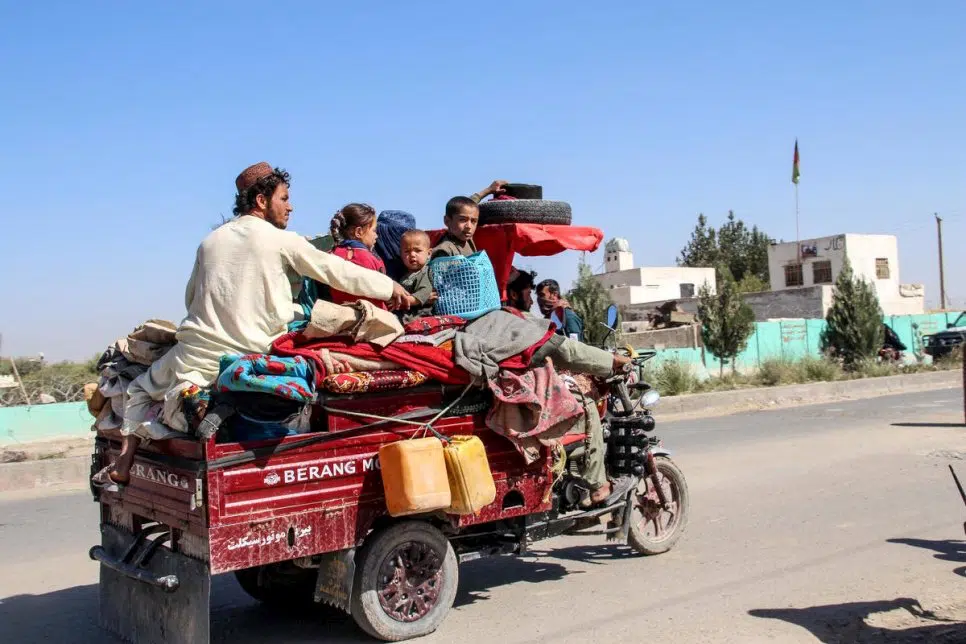
Internally displaced people flee from Nadali district to Lashkar Gah during ongoing clashes between Taliban fighters and Afghan security forces in Helmand province on October 14, 2020. © AFP
November 2020: UN High Commissioner for Refugees warns of grave consequences if world looks away from Afghanistan
United Nations High Commissioner for Refugees Filippo Grandi urged the international community to remain committed to the country and called for greater support for refugees, internally displaced people and returnees. He noted an upward trend in violence, which included by the killing, maiming, terrorization and displacement of Afghan civilians every day.
Given the context of the intra-Afghan talks, Grandi stressed the importance and necessity of a peace agreement. He also added that the commitment of the international community to Afghanistan’s development is critical.
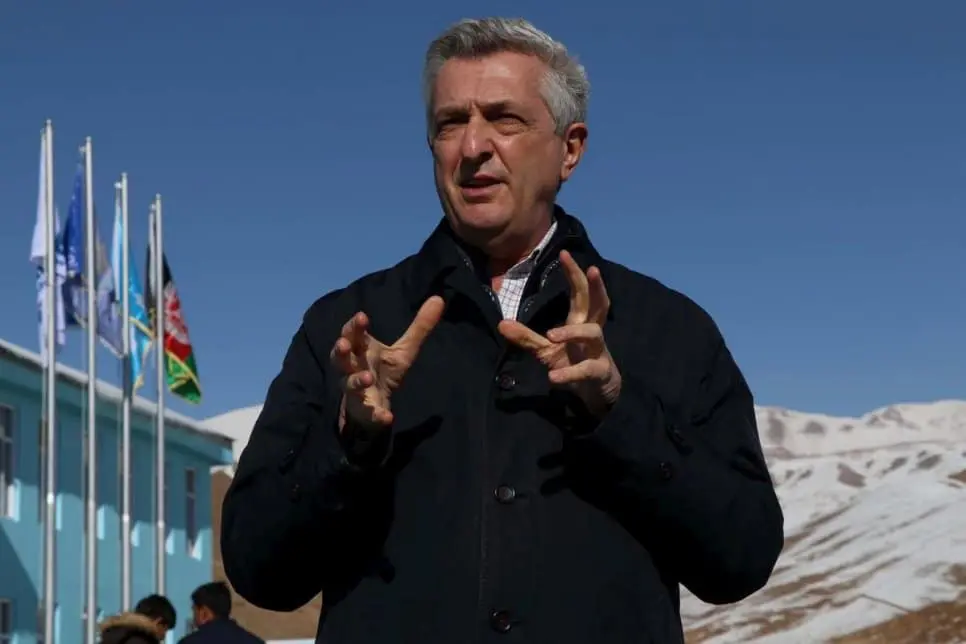
UN High Commissioner for Refugees Filippo Grandi visits the city of Bamyan, central Afghanistan to encourage the international community’s continuing engagement in the country’s delicate, ongoing peace process. © UNHCR/Farzana Wahidy
“Failure on either account,” Grandi said, “would see Afghanistan slide backwards with disastrous consequences, including further displacement possibly on a large scale. We have seen this happen several times in past decades. This disastrous scenario would require the mobilization of substantial humanitarian assistance under the most challenging security and logistical circumstances.”
May 2021: Internal displacement in 2021 passes 200,000 and UNHCR calls for international support
Within the first five months of 2021, over 200,000 people had been displaced within Afghanistan’s borders due to conflict. In light of the worsening situation, UNHCR called on the international community to support internally displaced Afghan and refugees seeking safety outside the country.
“Afghanistan is at a critical and historical juncture,” said UNHCR’s Assistant High Commissioner for Operations, Raouf Mazou. “With ongoing efforts to find peace, relief and development activities need to be scaled up simultaneously as well.”
July 2021: UNHCR warns of imminent humanitarian crisis
By July 6, the withdrawal of international troops was largely complete. On July 13, UNHCR warned of an imminent humanitarian crisis. Escalating conflict brought more human suffering and displacement. Displaced civilians reported incidents of extortion and the presence of improvised explosive devices on major roads. Casualties among civilians increased by 29 per cent during the first quarter of 2021 compared to 2020—with an increasing proportion of women and children being among those targeted. By July 15, UNHCR had provided support to more than 100,000 internally displaced persons within the year.
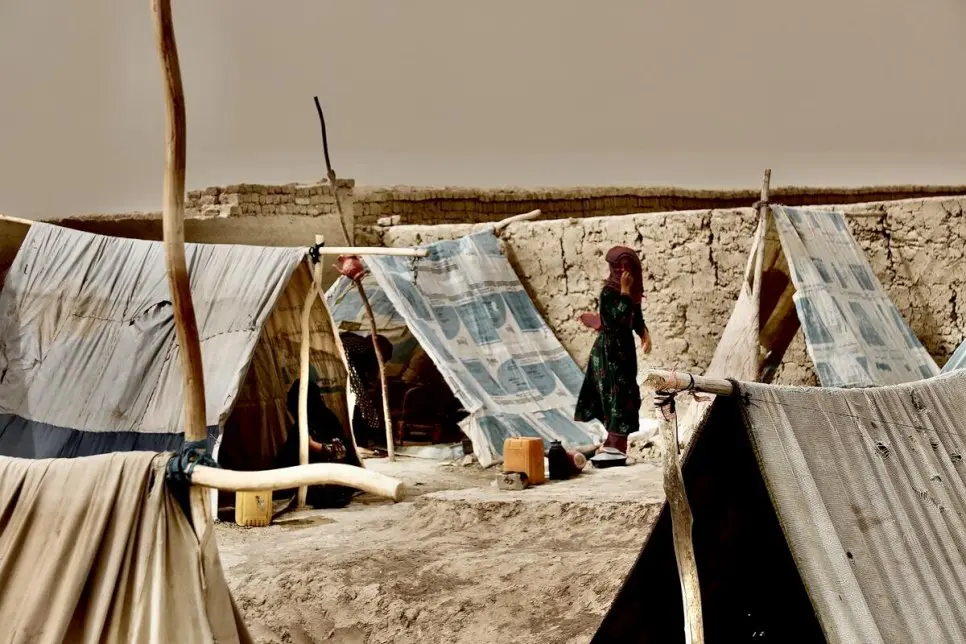
A displaced Afghan woman prepares to light a fire to boil water at an IDP camp in Mazari Sharif, northern Afghanistan. © UNHCR/Edris Lutfi
UNHCR reported that a failure to reach a peace agreement in Afghanistan would result in continued violence and further displacement—and urged the international community to step up support to the Government and people of Afghanistan.
August 2021: Escalating violence reaches new heights, taking a particular toll on women and children
In the wake of the withdrawal of international troops from Afghanistan, many parts of the country experienced a rapid deterioration in security and human rights—with the Taliban taking control of a rapidly increasing number of districts and capturing 26 out of 34 of Afghanistan’s provincial capitals in the space of ten days, ultimately taking control of the presidential palace in Kabul. By mid-August, ongoing fighting had been reported in 33 of Afghanistan’s 34 provinces.
Internal displacement from conflict reached 550,000 in 2021 alone, including 126,000 new internally displaced persons between July 7 and August 9, joining the 2.9 million Afghans already internally displaced at the end of 2020.
On August 13, UNHCR warned that the conflict is taking the heaviest toll on displaced women and children, with some 80 per cent of Afghans forced to flee since the end of May falling into this category—and called on countries neighbouring Afghanistan to keep their borders open.
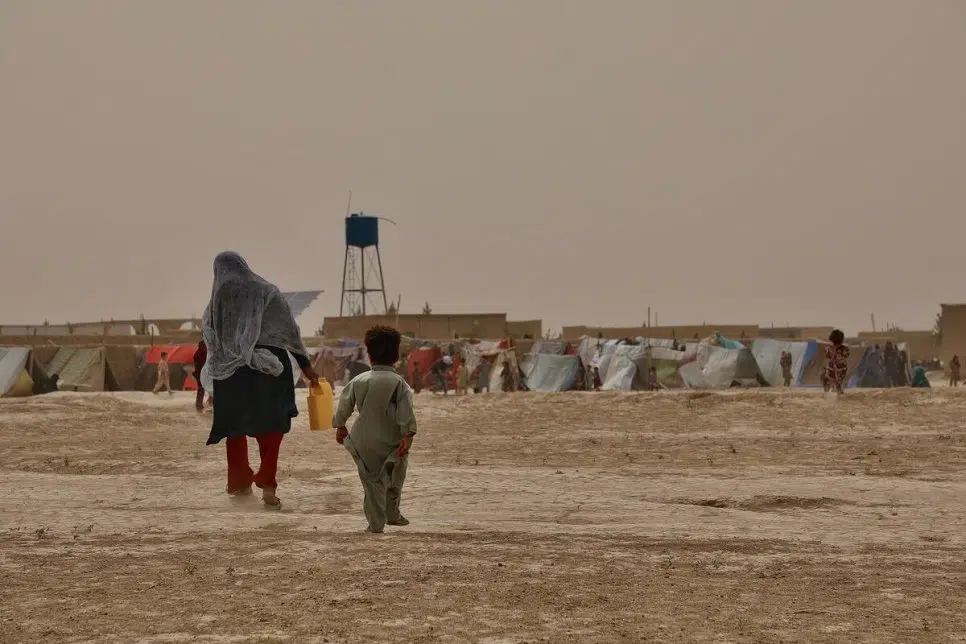
Some 550,000 Afghans have been forced from their homes since the beginning of the year. © UNHCR/Edris Lutfi
On August 17, a non-return advisory was issued by UNHCR, calling for a bar on forced returns of Afghan nationals, including asylum seekers who have had their claims rejected.
Without a significant de-escalation in violence, Afghanistan is on course to witness the highest ever number of documented civilian casualties in a single year since the UN’s records began.
Ways to help Afghan Refugees
There are a variety of ways you can help Afghan refugees and those who have fled their homes and are displaced within the country. You can donate $92, which is enough to provide a kit of core relief items (including blankets, sleeping mats, jerrycans, a bucket, mosquito nets and kitchen set) to a refugee family. You can also start a fundraiser to encourage family and friends to help. If you aim to raise $1,000, you can support the delivery of over 300 sleeping mats to those affected by the displacement crisis in Afghanistan. If you’d like to help raise awareness, share this blog post on social media or sign up for our mailing list to stay informed.
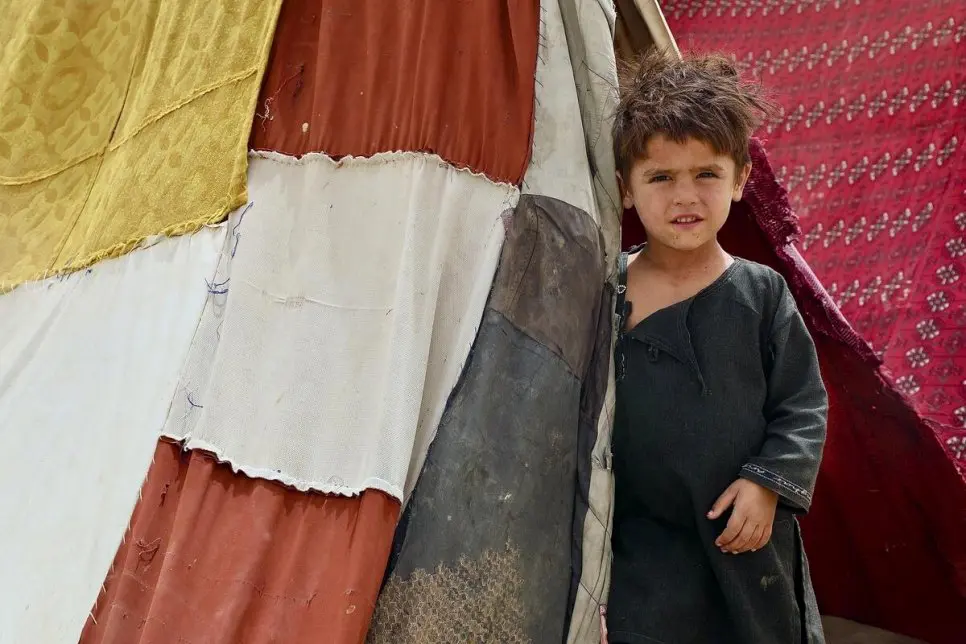
As of mid-August 2021, ongoing fighting has been reported in 33 of Afghanistan’s 34 provinces, and a majority of internally displaced Afghans are women and children. ©UNHCR/Hassib Sediqi
Subscribe to UNHCR’s mailing list
Last updated August 23 2021. Compiled by Noah Caza of UNHCR Canada.





